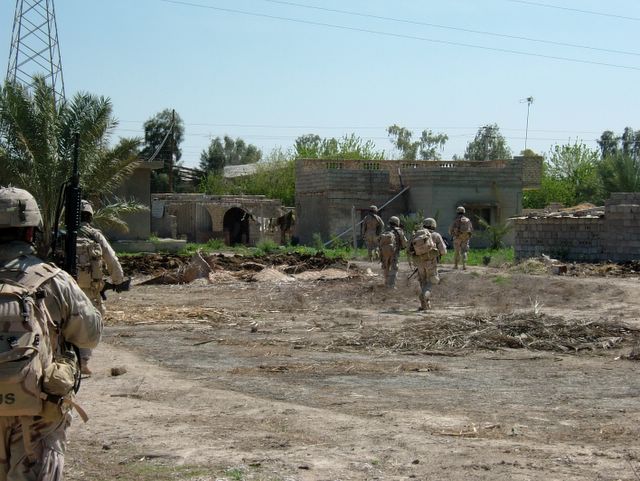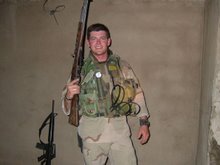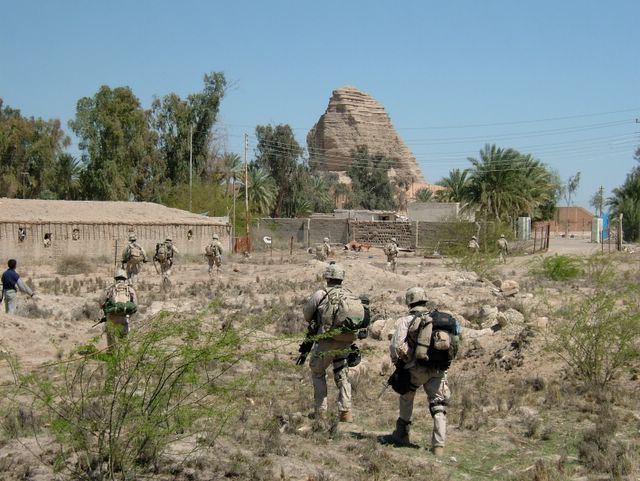Israeli Tanks in Central Gaza; Fighting Is Fierce
The New York Times
July 19, 2006
The South
Israeli Tanks in Central Gaza; Fighting Is Fierce
By CRAIG S. SMITH
GAZA CITY, Wednesday, July 19 — Just hours after withdrawing from the northern Gaza Strip, Israeli tanks moved into central Gaza early Wednesday, encountering fierce fighting that wounded at least three Israeli soldiers. One Palestinian was killed, Reuters reported.
The renewed fighting after a day of relative calm came as the Palestinian president, Mahmoud Abbas, returned to the territory from his home on the West Bank for meetings with United Nations envoys.
With Israel’s bombardment of Lebanon, the fighting in Gaza has been largely overlooked. But people continue to die daily in the territory, with 103 Palestinians killed so far, and Palestinian fighters continue to fire rockets into Israel.
Late Tuesday, Palestinian militants fired two homemade Qassam rockets from Beit Hanoun, which earlier in the day was vacated by Israeli tanks. The rockets, simple finned tubes carrying just a few pounds of explosives, landed near Sderot, Israel, without causing injuries, according to an Israeli Army spokesman.
The current crisis began with a raid by Palestinian militants on an Israeli Army post, in which two Israeli soldiers were killed and one, Cpl. Galid Shalit, 19, was taken prisoner.
But Palestinians are quick to point out that the dying began long before Corporal Shalit was captured, when what they say was shelling from an Israeli gunboat in early June in response to rocket attacks killed a family of seven while they were picnicking on a northern Gaza beach. Israel denied responsibility.
The abduction of Corporal Shalit set off an initially strong Israeli response, in which roads and bridges, the territory’s main power station and government offices were bombed. Most border crossings were closed and Israeli forces eventually moved into central Gaza, cutting the roughly 28-mile-long strip in two. Israel arrested 8 of the 24 ministers in the Hamas-led government and 20 members of the Palestinian parliament.
But the intensity of the initial assault waned as negotiations with the Palestinians’ Hamas-led government began through Egyptian mediators. Hezbollah’s attack on Israeli troops along the Lebanese border soon drew attention and resources away.
Israel withdrew from central Gaza last week and its incursions since then have been relatively light, limited to menacing tank and artillery fire without penetrating far into the territory. Most of their activity has been airstrikes focused on individual militants or suspected munitions factories.
On Tuesday, as Israel withdrew from the north, there were hopeful signs of normalcy. The border crossing with Egypt opened to allow traffic into Gaza. The Palestinian cabinet members not under arrest, including the prime minister, Ismail Haniya, and the foreign minister, Mahmoud Zahar, met at Mr. Haniya’s office. Both he and Mr. Zahar are on Israel’s list of targeted officials and have not often been seen in public since the crisis began.
On Tuesday evening, Mr. Abbas arrived for meetings with United Nations envoys in hopes of ending the conflict. The United Nations delegation, led by Vijay Nambiar, met with Israeli officials in Jerusalem earlier Tuesday.
But by midnight the boom of artillery fire once again echoed across northern Gaza, and by early Wednesday the Israeli Army was moving back into the middle of the territory. The target this time was the Maghazi refugee camp, north of Khan Yunis and not far from where Israel had earlier cut Gaza in two.
The refugee camp, which has grown into a crowded town since it was established a half century ago, is near the fence separating Gaza from Israel.
The Israeli Army said the incursion began late Tuesday with tank movements on the Israeli side of the border. It said it encountered heavy fighting as it entered the refugee camp and that “three or four” soldiers had been wounded. It did not say whether they were seriously hurt.
Copyright 2006 The New York Times Company












